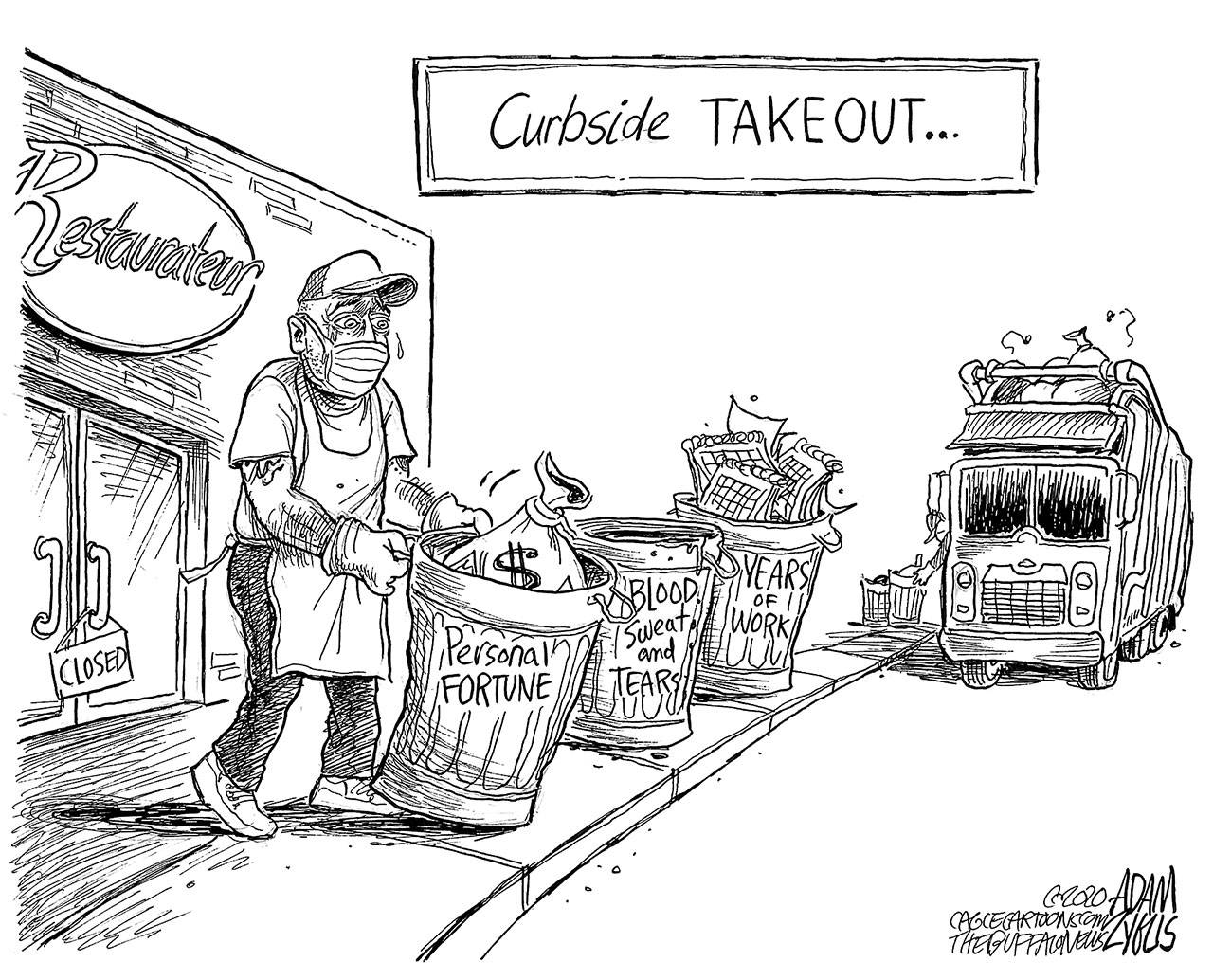The COVID-19 health crisis has had a devastating effect on the nation’s restaurant industry. According to a National Restaurant Association survey taken April 20, 8 million of the nation’s 11 million restaurant workers are currently unemployed. Hundreds of thousands of restaurants have closed, and one in five will not reopen. For the remaining restaurants, delivery sales have increased from 5-10% to 70-80% of total sales as a result of the in-house dining prohibition.
This dramatic growth in app-based delivery sales is reflected in the bottom lines of the four companies that own 99% of the delivery market: DoorDash, GrubHub, UberEats and Postmates. GrubHub and UberEats both reported record first quarter sales this year.
As restaurants start to reopen with significantly reduced seating capacity due to new COVID-19 regulations, their viability will depend on dramatically increasing the amount of delivery they do to offset their reduced in-house capacity. Whatever world the “new normal” takes, increased delivery from all sectors of the restaurant industry will be a necessary reality.
Delivery companies charge restaurants a minimum of 25-30% for their standard service of placing an order, picking it up and delivering it. Depending on “marketing and promotion” options, restaurants can pay higher fees. None pay lower. When delivery sales were 5-10% of sales, delivery fees took 2-3% of total restaurant revenue. With delivery sales at 70-80% of restaurant sales, the delivery companies are now taking 18-20% of restaurant revenues. When average restaurant profit margins are 8-10%, this makes restaurants no longer viable. Given restaurants’ dependence on the delivery companies, state and local governments have started to examine the predatory pricing practices of the delivery companies. Local governments around the country including Seattle, San Francisco, Los Angeles, Chicago, Cincinnati, Washington, D.C., and Boston, and most recently New York City, either have or are considering imposing delivery fee caps of anywhere from 5-20%.
In response, delivery companies are crying wolf, claiming the caps are illegal because they interfere with contracts between delivery companies and restaurants, and threatening to pull out of markets that impose delivery-fee caps. They also claim services to restaurants will be reduced and fees to consumers will have to rise to offset the reduced fees they charge restaurants. Let’s examine each of these claims.
• The caps are illegal. This is false. Restaurants sign contracts with the delivery companies to become part of their platforms, but the contracts all include a provision that allows restaurants to end the contract anytime they choose. When delivery fee caps are imposed, restaurants can legally end their existing contracts and sign new ones at reduced commission fees.
• Delivery companies will pull out of markets. First, they haven’t pulled out of San Francisco or Seattle, where delivery caps have already mandated reduced fees. Given the oligopolistic structure of the system, the delivery companies don’t compete over price. But they do compete over market share. If one pulls out of a fee-capped market, the others will gobble up their market share. If they all pull out, the incentive for anyone to move back in and acquire the others’ market shares will be too great to resist.
Delivery companies will reduce service and cut restaurant and restaurant-worker support programs. Please do so! Restaurants don’t need more than the basic delivery services. Nothing that the delivery companies are doing will help restaurants and their workers more than cutting their fees and allowing restaurants to be viable.
Charges will increase for the customer. This, in fact, is true. Fees to customers should increase. They are being provided a service and are not adequately paying for it. The delivery companies built their business model on getting restaurants to pay their fees and not customers. They argued restaurants wouldn’t mind carrying the load because delivery sales for restaurants were “marginal” sales, that is, small incremental sales added on to the main body of the restaurant’s normal in-house sales. The only costs for those marginal sales essentially were the costs of the food used to make the delivery meals. The workers were already there, the lights already on and rent already paid.
Delivery companies argued the costs for those marginal delivery sales were just 40-50% of the price of the meal. They argued getting 70% of the revenue of these meals would make restaurants 20-30% profit. This logic was wrong when delivery sales were 10% of total sales. It is idiotic when delivery sales are 70-80% of total sales. Delivery sales cost 80-90% of the menu price, not 40-50%, and yet revenues are only 70%. This is predatory pricing, and the restaurants have little choice but to pay it.
The simple truth is every delivery sale is a money-losing proposition for restaurants being forced to pay 25-30% to the delivery companies.
Consumers receive a significant benefit from getting restaurant-quality food delivered to their doorstep. If it were made explicit what the restaurant and consumers were each paying for the delivery service, the overwhelming majority of consumers would be willing to pay a higher delivery fee, understanding restaurants would receive a percentage of the ticket price that made their operation viable. And if the delivery fee was too much, the consumer could go pick it up themselves.
The need for regulating delivery fees is not going to end when in-house dining returns. Delivery sales are going to be a major portion of restaurant sales for the foreseeable future. If the delivery fees are not regulated for the long term, there will be a second wave of restaurant closures in the months ahead and millions more restaurant workers will lose their jobs.
John Schall owns El Jefe’s Taqueria in Cambridge, Mass., and Bethlehem, Pa. He formerly taught economics at University of Massachusetts Boston and Yale University.



